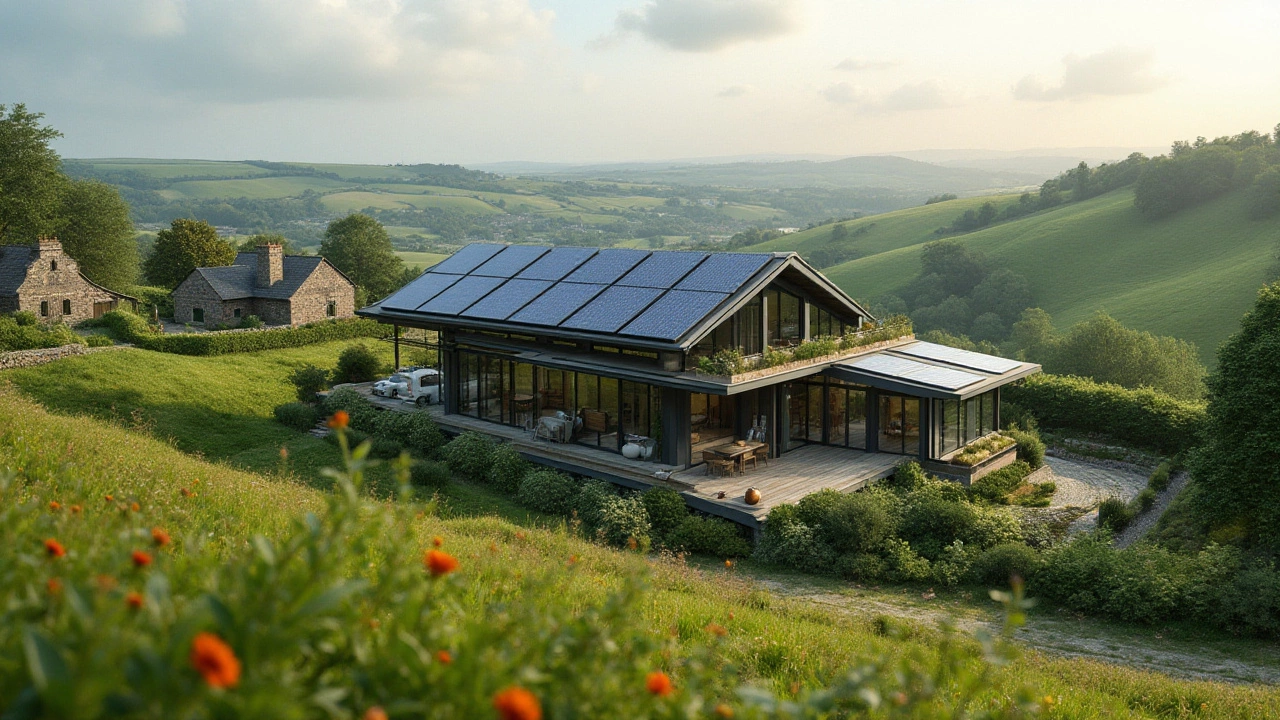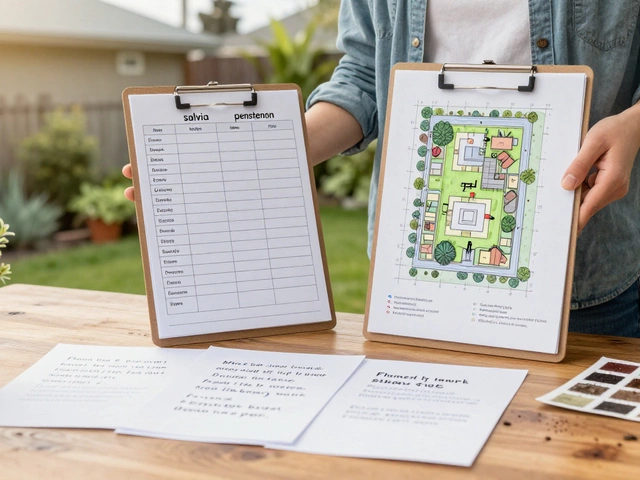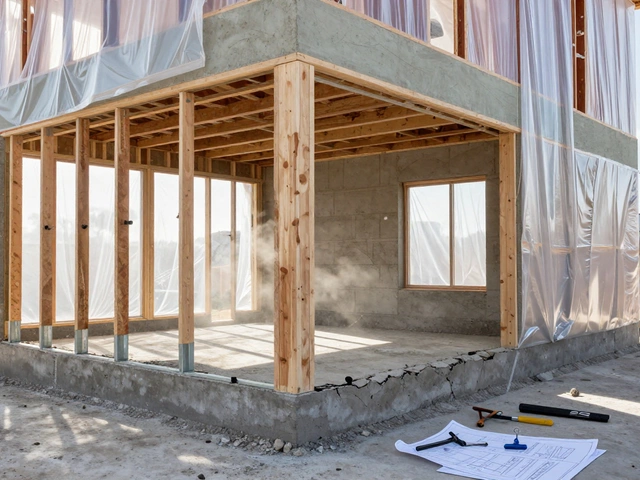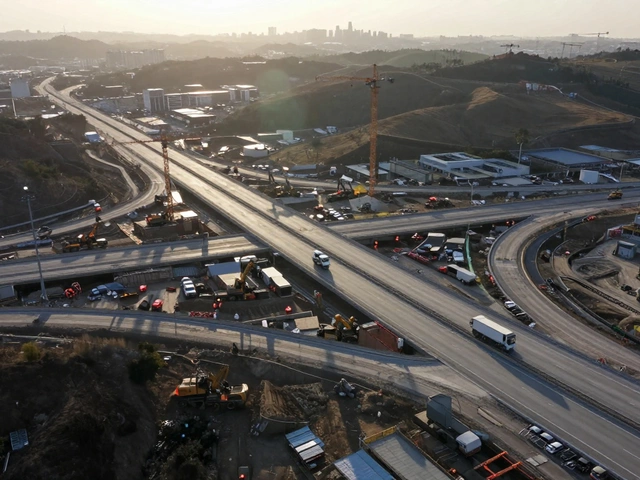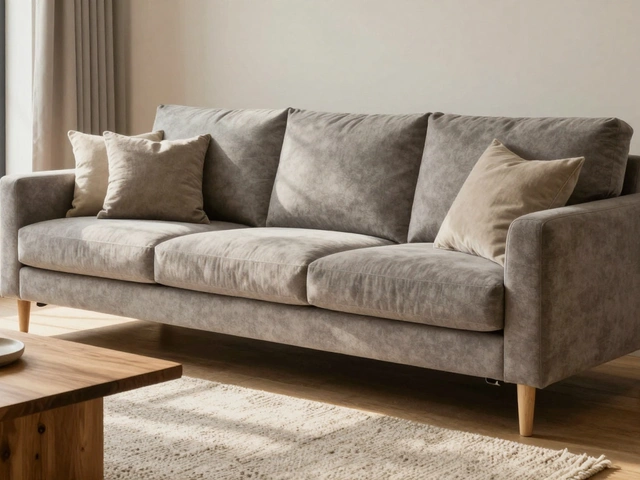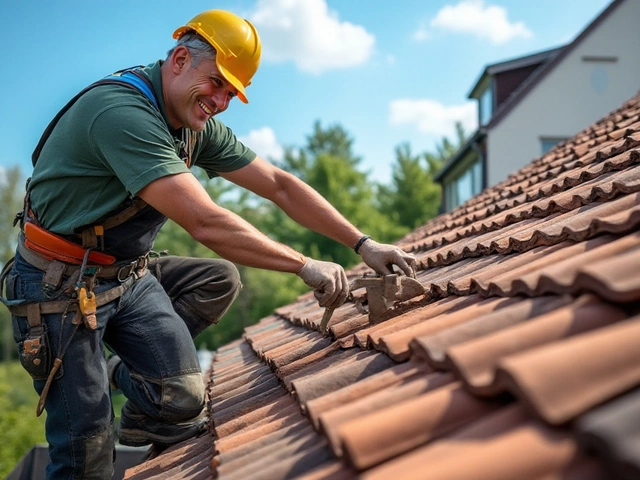When it comes to constructing a new home, durability is a factor that can't be overlooked. Building a house that stands the test of time requires careful selection of materials and techniques. Whether you're dreaming of a cozy cottage by the sea or a robust family home in the city, choosing the right methods can ensure your investment remains strong for years to come.
In today's world, where environmental concerns are also paramount, many builders are opting for materials that not only enhance strength but also favor ecological sustainability. Coupling innovation with practicality, it's possible to construct a home that meets both your personal needs and withstands the challenges posed by nature.
This article will guide you through the labyrinth of choices, from selecting robust materials to embracing innovative building practices. Let's explore the blueprint for lasting homes, ensuring your dwelling is ready to face both time and the elements.
- The Importance of Durability in Home Construction
- Choosing Strong Building Materials
- Innovative Construction Techniques
- Weatherproofing and Disaster Resistance
- Sustainability and Eco-Friendly Choices
- Maintenance Tips for Long-lasting Homes
The Importance of Durability in Home Construction
When constructing a home, durable homes are not just about withstanding the ravages of time, but also about ensuring safety and peace of mind for those who dwell within. This dedication to lasting quality means selecting materials that can endure everything from daily wear to extreme weather conditions. In recent years, with the spotlight on climate change and its consequences, homeowners and builders alike have had to reconsider traditional building practices. The conversation around home construction now includes an increased emphasis on structures that are not only strong and resilient but respect the environment too. The evolution of construction practices reflects a new consciousness: sturdy, eco-friendly yet sensible homes are the future. As the Canadian climate can range from harsh winters to rainy springs, constructing a home that can meet these challenges offers both protection and comfort.
The choice for building materials should be deliberate. Materials like concrete and steel are revered for their strength and sustainability. Concrete provides the robust base that protects homes from natural disasters, such as earthquakes and storms, making it a top contender for builders in vulnerable areas. Steel, celebrated for its resilience and flexibility, provides the skeleton for resilient homes, often being utilized in hurricane and earthquake-prone zones to confer the necessary robustness. These materials, besides their functional strength, also embody durability by reducing future maintenance costs, a fact home builders appreciate.
Interestingly, durability intertwines with financial considerations. A home with a solid, durable structure inevitably leads to lower repair and insurance costs over its lifespan. The upfront investment in quality materials and practices pays for itself over time. The peace of mind knowing your home is safe is worth investing in today’s world full of unpredictability. A report by the Insurance Bureau of Canada highlights that houses with durable construction materials are less likely to suffer for every future natural disaster event. Hence, builders with forethought prioritize energy-efficient designs, which favor insulation and sealing, creating homes that offer thermal comfort and withstand decades of climate wear.
"Housing is a basic human right, and with that, homes must be built to last," said Maggie Davidson, a civil engineer specializing in sustainable buildings. "Durability in construction not only strengthens economies and environments but enriches the very fabric of communities."
A focus on resilient homes can't ignore the benefits of modern engineering solutions, where innovative approaches are mitigating risks associated with traditional construction. Techniques like earthquake-proofing involve base isolation and damping technologies. Simultaneously, wind-proofing methods like reinforced walls and anchoring systems are gaining traction. Collaborating with experts and incorporating modern solutions at the blueprint stage can significantly enhance a home's lifespan. Adopting these forward-thinking strategies translates to developing a home much better equipped to face the challenges of tomorrow.
Choosing Strong Building Materials
When you're planning to build a house that lasts for generations, the selection of durable homes starts right from the materials you use. With each choice you make, you are not only designing the look of your future home but also defining its future resilience. Concrete and steel are among the most popular choices for builders looking to achieve a hardy structure. Concrete, known for its compressive strength, is often used in the foundation and wall structures of resilient homes. It has been a staple material in construction due to its versatility and ability to withstand extreme weather conditions. Meanwhile, steel's tensile strength makes it ideal for framing and reinforcements.
In addition to these traditional materials, there's also a growing trend toward using engineered wood products such as cross-laminated timber (CLT). CLT is not only environmentally sustainable but also surprisingly strong and lightweight, making it a favorite among eco-conscious builders. Its strength-to-weight ratio is impressive, offering a significant advantage in seismic zones or wind-prone areas. Bamboo is another material that's drawing attention because of its quick renewability and impressive durability. Known for its remarkable strength, bamboo has been used in construction for centuries, particularly in Asian countries. It's regenerative nature makes it a sustainable choice, and its flexibility allows it to absorb seismic forces efficiently.
"The durability of a building depends significantly on its envelope material," highlights a study published by the National Institute of Building Sciences. "Materials like brick and stone, which have been used for centuries, continue to stand out for their excellent durability, thermal properties, and low maintenance needs."
Exploring alternative materials like recycled steel and plastic composites can also lead to incredibly durable constructions. Recycled steel has the same structural integrity as new steel but with a much lower carbon footprint. When it comes to sustainable practices in construction, leveraging recycled materials is becoming increasingly important. These innovative composites are treated and fused to form panels that are strong enough to be used in walls, floors, and roofs.
Besides the choice of materials, the methods of combining them also matter significantly. Hybrid construction, which employs a strategic mix of materials like steel and concrete, can dramatically enhance the durability of a home. This technique optimizes the best qualities of each material, fortifying the building against potential threats from nature, like hurricanes and earthquakes.
Here's a glance at some of the key materials and their properties:
| Material | Key Property | Use |
|---|---|---|
| Concrete | Compressive strength | Walls, foundation |
| Steel | Tensile strength | Framing, reinforcements |
| CLT | Flexibility | Walls, roof |
| Bamboo | Elasticity | Flooring, scaffolding |
As you consider which building materials to use for your project, it's worth consulting with experienced architects and builders. Their insight and recommendations can help align your vision with practical, durable solutions. Remember, the right combination of materials and construction methods can result in a home that not only survives but thrives for decades to come.
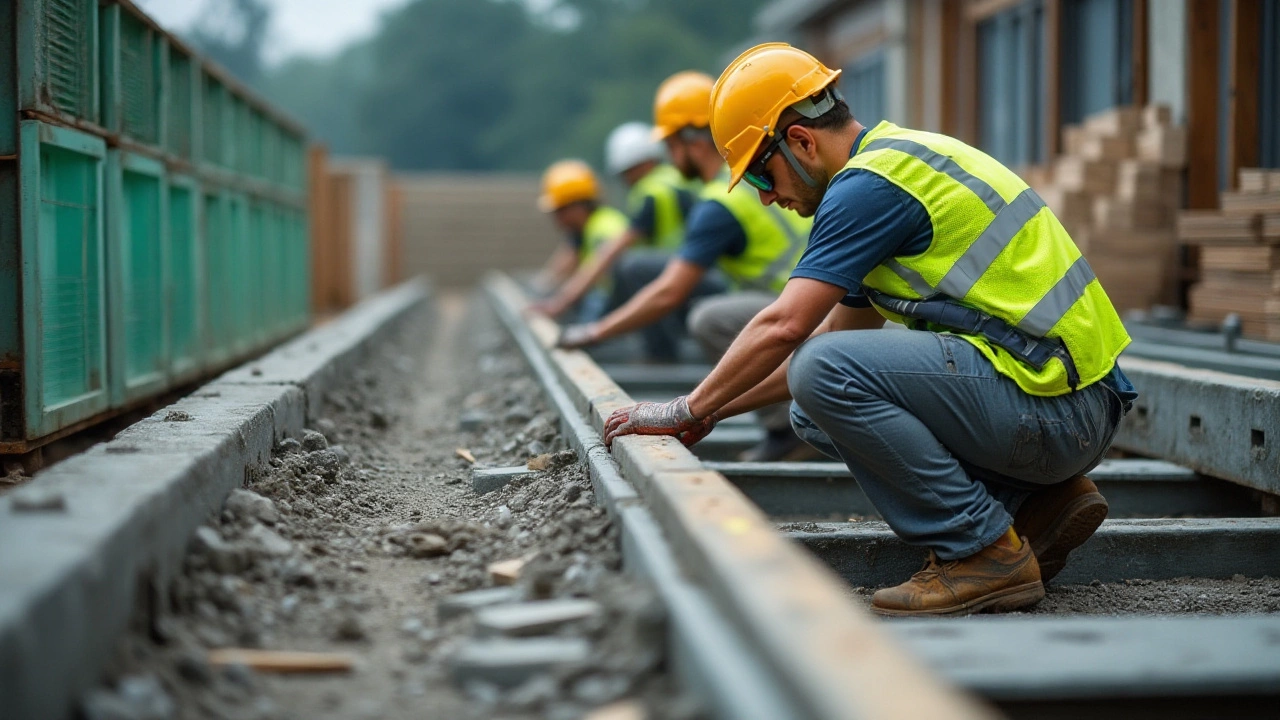
Innovative Construction Techniques
In the quest to build durable homes, modern construction has seen a surge in innovative techniques aimed at enhancing both strength and sustainability. One such approach is building with Insulated Concrete Forms (ICFs), which provides a robust barrier against the elements, while also offering insulation benefits. Not only are ICFs known for their energy efficiency, but they also contribute significantly to the structural strength of a building. These forms consist of interlocking blocks or panels, which are then filled with concrete, offering exceptional resistance to severe weather conditions like hurricanes and earthquakes.
An intriguing development in this field is the advent of 3D-printed homes. This method involves using large-scale 3D printers to create homes layer by layer using a concrete mixture. This technique not only reduces construction time but also minimizes waste, making it an eco-friendly option. The precision of 3D printing allows for intricate designs and helps ensure that homes are built to precise specifications, increasing their durability and resilience. A notable example of this technology's success is seen in the Netherlands, where the first 3D-printed housing project was welcomed with much acclaim.
Some companies are even testing the waters with cross-laminated timber (CLT), a material that brings a modern twist to using wood in construction. CLT is known for its strength and stability and offers a beautiful, natural aesthetic while being much lighter than concrete or steel. This innovation in building materials also draws on the renewable nature of timber, making it a favorite among those looking to reduce their carbon footprint. Builders appreciate that CLT panels can be prefabricated to specific sizes, speeding up the construction process without sacrificing quality.
Quoting Henry M. Paulson Jr., former U.S. Treasury Secretary, he once remarked, "Sustainability isn't just about doing good—it's good business." Embracing sustainable and advanced techniques in construction is not only a matter of ethical responsibility but also one of economic efficiency. In line with this philosophy, prefabricated modular construction is gaining traction. By manufacturing components off-site and then assembling them on location, this method reduces waste and speeds up the building process. The components are rigorously tested in controlled environments before they're assembled, ensuring they meet high standards of durability and quality.
Additionally, advanced framing techniques are proving to be especially effective in maximizing material efficiency while maintaining structural integrity. Techniques like opting for two-stud corners and reducing unnecessary headers help save on lumber and provide better insulation space. These methods contribute greatly to the construction of resilient homes that make more efficient use of resources. Using materials wisely not only benefits the homeowner but also the planet, showcasing how cutting-edge techniques can have widespread, positive impacts.
Let's also delve into the potentials of incorporating hybrid construction methods, which involve mixing various materials and techniques to achieve the best results. For example, combining traditional concrete foundations with steel beams and advanced, flexible roofing materials can create a building that leverages the strengths of each material. Such hybrid methods allow builders to customize homes to endure specific environmental conditions, ultimately increasing their resilience.
These approaches represent just a snippet of what is possible with modern construction innovations. As research and technology continue to evolve, they open up new possibilities for creating homes that not only endure but thrive, regardless of what nature throws their way. Embracing these innovations could be the key to ensuring home longevity and sustainability for generations to come.
Weatherproofing and Disaster Resistance
Weatherproofing a house is more than just keeping the rain out; it's about creating a barrier that can withstand nature's harshest elements. As climate change brings increasingly unpredictable weather patterns, including severe storms and hurricanes, building a home with disaster resistance in mind has become a critical consideration for homeowners and builders alike. Incorporating strong building materials such as reinforced concrete, steel frames, and impact-resistant windows can significantly enhance a structure's resilience against wind and water damage. These materials are commonly used in constructing durable homes due to their ability to maintain integrity under extreme conditions.
An effective weatherproof home often involves a combination of traditional knowledge and modern technology. Sealing every possible entry point, including windows, doors, and roofs, ensures that water intrusion doesn't become a costly issue. Properly installed gutters and drainage systems reduce the risk of flooding around the foundation. Moreover, advanced architectural designs like sloped roofs and elevated foundations contribute to minimizing damage from heavy downpours or rising floodwaters. Largely, building codes in areas prone to such natural disasters have evolved over time, demanding structures that prioritize safety and durability.
A notable innovation in disaster-resistant construction is the influence of proven techniques from other regions. For example, traditional Japanese homes utilize earthquake-proof designs, featuring flexible frames that sway instead of breaking during seismic activities. Modern construction in high-risk earthquake areas has adapted these designs, ensuring that homes remain secure amidst earth shifts. Meanwhile, in the United States, the Federal Emergency Management Agency (FEMA) has developed guidelines for tornado-safe rooms, recommending reinforced concrete or steel to create secure shelters within homes.
"Designing homes that not only meet but exceed local building codes can make a significant difference in how well they endure natural disasters," says Dr. Lucy Jones, a respected seismologist and disaster preparedness advisor.
Moreover, cutting-edge technologies have enabled smarter construction practices. For instance, 'smart glass' technology in windows can adjust transparency levels based on outside weather conditions, vastly improving energy efficiency and comfort. Additionally, products like weather-resistant barriers and house wraps are being continually refined to provide superior protection against leaks and drafts.
Incorporating these building materials and construction techniques isn't just about prepping for unlikely worst-case scenarios. A well-built home with disaster-resistant features offers peace of mind and can lead to lower insurance premiums, further emphasizing its value. It's crucial for builders and future homeowners to consider these factors, understanding that a little upfront investment can safeguard a property's essence long into the future.
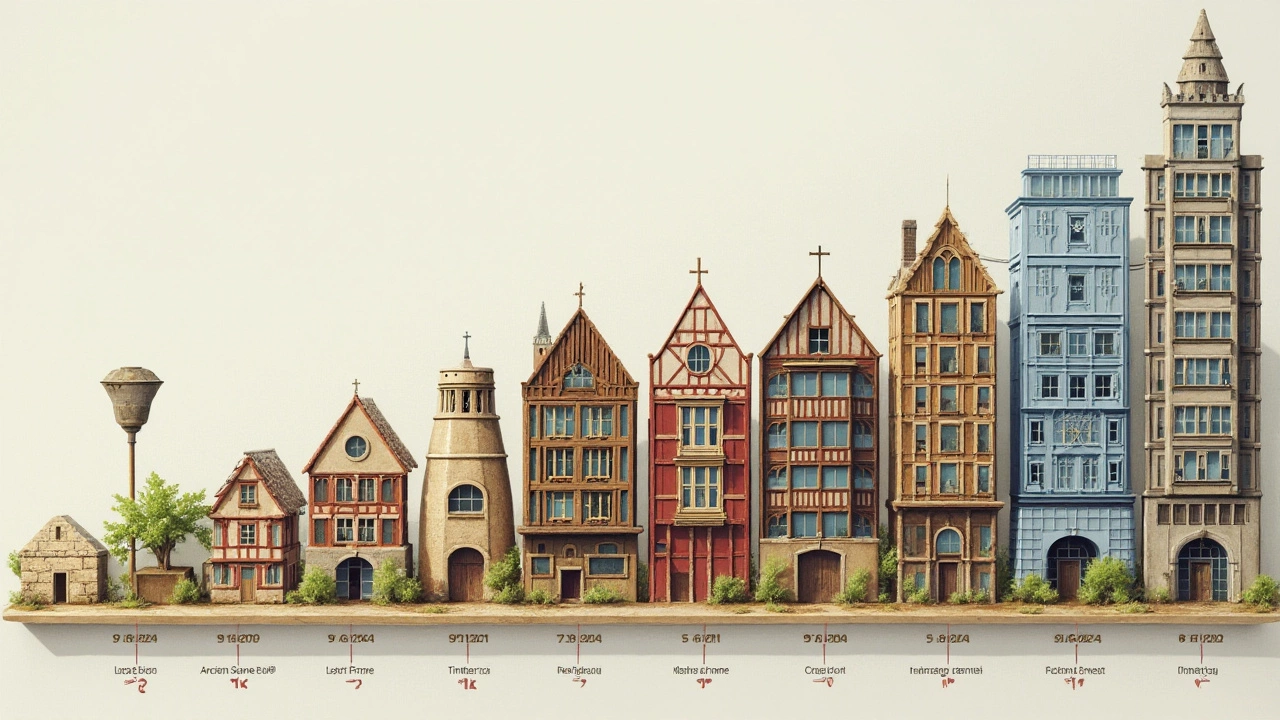
Sustainability and Eco-Friendly Choices
In recent years, the focus on building sustainable and eco-friendly homes has risen significantly. As climate change becomes an ever-pressing issue, people seek ways to minimize their environmental footprint. This has sparked interest in green building techniques that not only prioritize energy efficiency but also use materials that are renewable, recycled, or have low environmental impact. Choosing the right building materials can significantly influence the sustainability of a home. For instance, opting for bamboo, cork, or reclaimed wood provides a beautiful aesthetic and ensures resources are responsibly sourced. Bamboo, renowned for its rapid growth and high strength, can serve as an excellent alternative to traditional hardwoods.
Innovative Green Building Technologies
Incorporating innovative technologies such as solar panels and rainwater harvesting systems can further reduce a home's dependence on non-renewable resources. Solar panels harness the power of the sun, providing a renewable energy source that can power a home's electrical needs, while rainwater systems ensure efficient water usage. These technologies not only speak to environmental benefits but also add to the durable home factor by reducing utility costs and increasing market value.Consider, for example, the concept of Net Zero homes, which generate as much energy as they consume. These homes, harnessing solar power and utilizing smart energy-efficient appliances, offer a practical model for sustainable living. According to the U.S. Department of Energy, Net Zero homes can cut energy bills by up to 100%, offering long-term savings while contributing to environmental conservation.
"By 2050, buildings could potentially save up to 82% in emissions through sustainable practices," notes the International Energy Agency.
The Role of Certifications and Standards
To ensure new builds meet environmental standards, various certifications like LEED (Leadership in Energy and Environmental Design) and BREEAM (Building Research Establishment Environmental Assessment Method) have been developed. These certifications assess a building's performance across a range of areas, including energy efficiency, water usage, and construction materials. A LEED-certified building, for example, is assessed on criteria such as sustainability of the site, materials used, and indoor environmental quality. Such standards have been instrumental in guiding builders towards more sustainable practices and offering buyers assurance of the home's eco-friendliness.Sustainable practices aren’t just limited to materials and technologies; design itself plays a crucial role. Homes designed with passive solar orientation can maximize natural light and reduce heating needs in colder months. Equally, proper ventilation designs ensure comfortable living spaces without excessive air conditioning. Landscaping too, when planned with native plants, can reduce irrigation and maintenance needs, besides enhancing the natural habitat.
Finally, it's essential to understand that durable and sustainable home building is an evolving field. Continuous research and development in this sector promise new, innovative solutions that align with environmental goals. Embracing these eco-friendly choices not only contributes to the larger fight against climate change, it's also a savvy investment in the future, one where homes are both resilient and kind to our planet.
Maintenance Tips for Long-lasting Homes
When it comes to ensuring your home stays in top-notch condition, regular maintenance is your best ally. Keeping up with routine checks not only preserves the integrity of your space but also upholds its value over time. Think of your home as a living thing that needs occasional nurturing to thrive. By being proactive, you can catch small issues before they become expensive headaches. Start by creating a maintenance calendar to remind you of necessary inspections and chores throughout the year. Focus on areas prone to wear and tear, like roofs, foundations, and external exteriors. For instance, regular roof inspections can help prevent leaks and water damage, especially in regions with heavy rainfall or snow, such as Vancouver. It's recommended to have a professional inspect your roof at least once every two years, but don’t hesitate to check yourself after intense weather conditions.
Ensuring the longevity of your home goes beyond just fixing what’s broken; it involves a regular, mindful approach to upkeep that can significantly reduce larger repair costs in the future. One essential tip is to periodically check your home's plumbing system for leaks or corrosion. Depending on your location and the material used, pipes can be subject to different stressors. For instance, copper pipes, while durable, can sometimes fail due to pitting corrosion. If left unchecked, what might start as a minor drip could quickly escalate into a costly water damage situation. Consider installing a water softener if you live in an area with hard water, as it can considerably reduce mineral buildup in pipes.
Venturing outdoors, remember that the durability of a home is equally conditional on the land it rests on. Resilient homes are built to ward off intrusions from moisture and pests, which means paying close attention to your lawn and foundations. Always ensure that downspouts and gutters guide rainwater away from the foundation. This not only protects the integrity of the foundation but also reduces the likelihood of basement flooding. Additionally, keep shrubs and trees trimmed away from the house to decrease pest infestations and reduce wear and tear on siding and roofing materials. Over the years, hosting these monthly or seasonal maintenance tasks will help you avoid costly emergencies down the road.
According to Mike Holmes, a renowned home maintenance expert, "Regular maintenance is cheaper than repair." This phrase succinctly captures the essence of being proactive about your home's needs.
Pay particular attention to energy efficiency, as homes built today often prioritize sustainability. Even for older homes, upgrading to energy-efficient windows and installing smart thermostats can make a world of difference. Not only does this approach contribute to environmental sustainability, but it also minimizes monthly utility costs. Inspect heating and cooling systems annually to ensure they are running efficiently, replacing filters as necessary. Emphasizing energy efficiency within maintenance routines not only helps in maintaining durable homes but also brings about substantial long-term cost savings.
Keeping a checklist of the little things can also work wonders for your house’s wellbeing. For example, peeling paint might seem like a cosmetic flaw, but it can be an indicator of higher humidity levels within your home. Addressing the paint sooner prevents possible moisture buildup and mold growth inside the walls. Similarly, inspecting your home’s insulation periodically, especially before the onset of cold winter months, can prevent drafts and inefficiencies in heating. Aspects like these, while minor, contribute significantly to preserving the comfort and sturdiness of your household.
